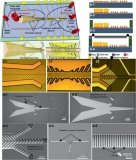2018年世界人工智能大会上,微软全球执行副总裁、微软人工智能及微软研究事业部负责人沈向洋博士公布了Airdoc和微软和礼来的合作,于此同时微软总部对Airdoc进行了详尽的专访,采访内容如下:
对很多人来说,人工智能已经可以为我们的健康做出巨大贡献,现在人工智能(AI)只需不到一秒钟就可以识别你的视网膜,找到潜在的慢性疾病。
Airdoc是一家中国快速发展并且拥有全球使命的创业公司,Airdoc研发了可以从视网膜影像中识别数十种慢性疾病和并发症的病变的人工智能慢性病识别算法:可以识别从糖尿病到心血管疾病再到视神经疾病等慢性疾病。
现在的人工智能可以在瞬间识别慢性疾病
(Airdoc创始人张大磊)
该算法在视网膜病变识别准确率已经和顶级医生诊断水平相当。并且在整个操作过程中拥有无痛、低成本和自动化等众多特点,它可以在全世界范围内为大人群提供健康服务。
“我们将算法布到云端,从而帮助用户更好的了解自己的健康情况。”在家人发生医疗问题后,为了让更多的患者能够享受更好的医疗服务,张大磊在四年前创立了Airdoc。
长期以来,视网膜检查一直都是医生工作中的常规检查,通过视网膜不仅能够检测眼睛的健康状况,还能够检查身体其他部位的情况。为了更好的让人工智能识别视网膜影像,张大磊组建了一支志同道合的团队,在Microsoft Azure的帮助下,训练人工智能寻找微小的疾病迹象,如斑点、出血、变色、血管变形和其他异常,最终研发出了Airdoc慢性病识别算法。
“我们发现微软的云基础设施可以帮我们更好的对算法进行训练,”张大磊说, “在Azure中训练深度学习模型非常容易。同时Azure的数据的安全性十分有保障,这在我们日常的工作中至关重要。Airdoc一直与微软机器学习团队密切合作。”
张大磊在五道口的办公室里展示了Airdoc的慢性病识别系统产品。
只需要坐在凳子上,将下巴放在眼底照相机的支架上,凝视眼前的黑暗。然后眼前会出现一个绿色十字,片刻之后,有一道白光闪现就完成了视网膜影像的拍摄,然后另外一只眼镜重复这个过程。
机器拍摄了高分辨率的视网膜影像后,算法立即将视网膜影像发送到云端,在云端只需要20到30毫秒(大约与眨眼相同的时间)就可以完成视网膜影像的识别。
现在的人工智能可以在瞬间识别慢性疾病
(Airdoc产品体验)
片刻之后,一个描述详细的诊断仪表板将发送到您的微信上。可以判断慢性病从低到中等到高的风险程度。如果有问题,它会敦促您寻求专业的医疗帮助。
现在Airdoc慢性病识别算法可以直接识别30种疾病和并发症,未来这个数字将会被提高到50,最终可能超过200。
张大磊认为Airdoc的算法在医疗供给端提供了新的服务,人工智能可以大规模提供技术支持从而缓解医疗资源不足的情况。到目前为止,Airdoc已经完成超过112万人次的筛查,遍布中国、美国、印度、英国和非洲部分地区。 “Airdoc用户遍布全球,希望我们的慢性病识别产品可以帮助用户更好的预防各种慢性疾病。“
中国拥有13亿人口,有超过1.14亿人患有糖尿病 , 但是糖尿病的知晓率只有30%,另外70%的人不知道自己已经患病,如果没有及早发现,最终会患有严重的并发症,比如失明、中风和其他可能致命的疾病。
“糖尿病性视网膜病变(DR)是糖尿病最常见和严重的并发症之一。一旦患者出现症状,他们已经处于DR的晚期,在没有及时治疗的情况下会失明,“上海长征医院眼科主任魏锐利教授表示, Airdoc的产品已经在上海长征医院展开应用,为医生提供准确,简单的诊断工具。
现在的人工智能可以在瞬间识别慢性疾病
(上海长征医院使用Airdoc产品)
“通过人工智能可以进行初步检查,医生可以对患者进行更好的安排, 医生有更多时间处理相对严重的病例。”张大磊说。
在中国可以自主识别视网膜图像的眼科医生数量远远不足,Airdoc正在积极寻找人工智能的使用场景。 今年Airdoc将会在中国最大的眼镜零售连锁眼镜店中的200家门店中安装Airdoc的慢性病识别系统,未来1年内将会遍布1200家眼镜店,这样当顾客进行眼科检查或购买眼镜时,可以快速进行视网膜扫描完成健康的检查。
于此同时,Airdoc正在研发一种新型的设备,可以帮助用户进行持续监测,类似VR眼镜的一个设备,可以实时监控我们的慢性病的变化情况。
英文原文:
Diagnosing diseases with AI in the blink of an eye
Let artificial intelligence (AI) look into your eyes. In less than a second it can check for potential medical problems and it might just save your life.
Airdoc, a fast-growing start-up in China with a global mission, has created an AI-driven system that takes and analyses photographic images of the retina at the back of each eyeball. From this data, it seeks out the telltale signs of dozens of chronic illnesses and conditions such as diabetes, hypertension, arteriosclerosis, optic nerve disease, high myopia, age-related macular degeneration, and many more.
Painless, low-cost, and automated, it has a higher accuracy rate on finding indications of diseases on retinal images than slower conventional diagnoses by doctors. As such, it has the potential to make preventative healthcare available to millions of people, not just in China, but around the world.
“We are using an algorithm in the cloud to save the lives of people who don’t even know they have serious medical problems,” says Ray Zhang, who founded Airdoc four years ago.
Doctors have long examined the retina not just to gauge the health of the eye, but also for signs about the rest of the div. Knowing this, Ray put together a team of like-minded IT engineers who amassed data from the pixels of thousands of retinal scans and created an algorithm. With the power of Microsoft Azure’s machine learning capabilities, they set about teaching it how to look for tiny signs of disease like specks, spots, discoloration, deformed blood vessels, and other abnormalities.
“We found that Microsoft has the most advanced cloud infrastructure to do this,” Zhang said. “We have been working with the Microsoft machine learning team very closely. Training deep learning models in Azure is very easy.” Patient data is also kept secure and confidential by Azure, which is “mission-critical to our service level for our customers.”
In his office in suburban Beijing, Zhang proudly demonstrated the physical part of Airdoc’s system – a small desktop device that looks similar to a scanner a neighborhood optometrist might use for a routine eye exam.
You sit on a stool, lean forward, place your chin on a padded brace, and stare into the darkness of an eyepiece. The algorithm then takes over, precisely adjusting the angle of your head until a green cross comes into focus in the gaze of your right eye. A moment later there’s a bright, but not uncomfortable, flash of white light. The process is repeated for your left eye.
The machine has just taken high-resolution medical-grade images of both your retinas. It instantly sends them to the cloud where it takes 20 to 30 milliseconds (about the same time as an eye blink) of computation to analyze both.
Moments later an impressively detailed diagnostic dashboard is sent to your smartphone. It rates from low to medium to high your susceptibility to a long list of diseases. If there is a problem, it urges you to seek professional medical help.
Right now, it can search for 30 diseases. More machine learning will soon boost that number to 50, and eventually, it could go beyond 200.
Zhang regards his system as a gamechanger because of its potential to deliver at scale and relieve stretched medical resources. To date, it has scanned more than 1.12 million people, mostly in China, but also in the United States, India, Britain, and parts of Africa. “Airdoc users are all over the world. We hope our deep learning technology can prevent all kinds of disease.”
China, with a population of 1.3 billion, only has about 1,100 eye doctors who are qualified to analyze retinal images. So, the challenge of providing adequate diagnostic services is truly massive – and perhaps no more so than for the epidemic of diabetes.
Authorities estimate as many as 114 million Chinese have diabetes – but only 30 percent of them know that. The other 70 percent are unaware and, without early detection, will eventually be struck down with serious maladies, like blindness, strokes and other potentially fatal conditions.
“Diabetic retinopathy, or DR, is one of the most common and serious complications of diabetes. Once patients feel symptoms, they are already in a severe stage of DR and will go blind without proper treatment,” says Dr. Rui Li Wei (pictured in top image) of Shanghai’s Changzheng Hospital, one of several major medical institutions that now routinely uses Airdoc’s technology as a quick, accurate, and simple diagnostic tool.
By taking on the time consuming and laborious task of reading scans, physicians can more easily identify and prioritize patients with serious problems. “It frees up a doctor’s time to work with more severe cases,” Zhang says.
Meanwhile, Airdoc is looking at new ways to widen its reach. A major Chinese optical retail chain has recently installed its machines in 200 stores so that when customers come in for an eye check or to buy glasses, they can also get a quick retinal scan. They hope to increase this to 1200 stores within the next three years.
Airdoc is also exploring how it can give ongoing help to patients with diabetes and other diseases. It is currently developing a visor – like those used for virtual reality games – that could regularly conduct scans and let their doctors see how their treatment is progressing.
 德赢Vwin官网
App
德赢Vwin官网
App






















评论